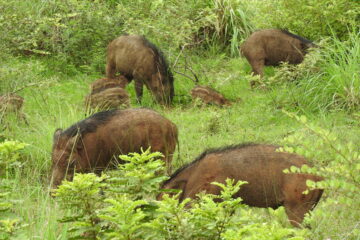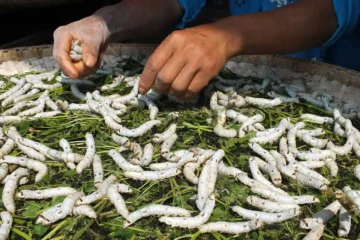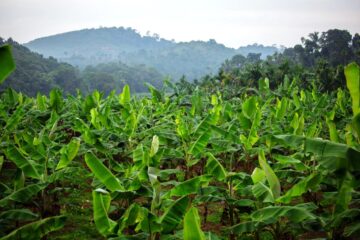Introduction: Our ancient Sangam literature emphasizes the importance of forests. Ideally, 33% of our country’s total area should be covered by forests, but currently, only 29.39% is forested. Urbanization and industrial expansion are leading to the depletion of forests. In this scenario, promoting agroforestry can help grow forests and provide sustainable income.
Agroforestry: Agroforestry involves cultivating food crops and fodder crops alongside trees. Agroforestry meets 50% of our fuel needs, 66% of timber requirements, 70-80% of plywood needs, 6% of paper pulp requirements, and 9-11% of fodder needs.
Challenges in Agriculture: Urbanization, limited irrigation water, labor shortages, and increased agricultural costs due to extensive input use are major challenges. Additionally, natural disasters like droughts, cyclones, floods, and heavy rains can damage crops, reducing yields and income for farmers.
Solution: Agroforestry: By implementing agroforestry, farmers can reduce these challenges and increase their income. This practice is beneficial not only in fertile areas but also in challenging regions such as arid zones, hilly areas, saline and alkaline soils, and regions with low soil fertility.
Types of Agroforestry:
- Agrosilviculture:
- This involves growing crops like maize, millet, cotton, groundnut, and pulses alongside trees.
- Annual crops can be cultivated between trees, ensuring year-round income.
- Shade-loving and shallow-rooted crops are suitable to avoid competition with tree roots.
- Fodder crops can be grown to reduce livestock feed costs and increase income.
- In fertile areas with some irrigation, horticultural crops like tomato, okra, and brinjal can be intercropped with trees like neem, teak, and fruit trees (guava, gooseberry, java plum, tamarind) for higher income.
- Flowering plants like chrysanthemum can be grown during festive seasons for additional income.
- Initial irrigation can support crop and horticultural cultivation between tree rows for sustained income.
- Silvopasture:
- In areas with limited irrigation and soil fertility, grow trees like tamarind, neem, and babul, along with fodder grasses.
- Fodder crops like Cumbu Napier hybrid grass, fodder sorghum, and Stylo can generate up to Rs. 80,000 per acre.
- Protein-rich fodder crops reduce livestock feed costs.
- Grow crops like maize, groundnut, and stylo between tree rows for dual benefits of grain and fodder.
- Apiculture:
- Multiple tree species and crops in agroforestry support beekeeping.
- Place about ten bee boxes per acre to produce 5-8 kg of honey per box annually, providing an additional income of up to Rs. 50,000.
Benefits of Agroforestry:
- Prevents deforestation.
- Leaves and litter from trees enrich the soil.
- Reduces soil erosion and preserves the natural environment.
- Improves microclimate and reduces soil surface temperature.
- Increases soil organic matter and improves soil structure.
- Enhances crop yield and income through diversified cropping systems.
Windbreaks with Eucalyptus:
- To protect crops from strong winds, plant three rows of Eucalyptus at 1-meter row spacing and 2-meter plant spacing around the field in a zigzag pattern to reduce wind speed.
- Planting 240 trees around an acre can yield 13 tons of Eucalyptus in four years, generating an additional income of Rs. 69,000.
P. Maheswaran, Project Coordinator, M. Arunraj, C. Sabarinathan, Technical Experts, Agricultural Science Centre, Theni.










